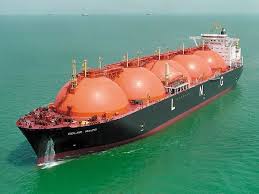
BHP yesterday confirmed that the drift away from Australian LNG goes on:
He said greenfield liquefied natural gas projects remained “economically challenged” and signalled BHP was in no rush to move forward with the Scarborough LNG venture with ExxonMobil off WA. While floating LNG is the leading option for Scarborough, Mr Cutt said BHP wanted further study of options involving existing LNG capacity.
Similarly, plans for a new stand-alone project at the giant Mad Dog venture are being reworked with partners BP and Chevron to improve returns.
Mr Cutt signalled further streamlining of the portfolio beyond last year’s $US1.7 billion sale of BHP’s interest in Browse LNG and the recent divestment of the Liverpool Bay asset in Britain. It has acreage in the Permian Basin and in the Hawkville play up for sale. He declined to estimate a timing for selling interests in Pakistan and Algeria, which he said had “limited running room for growth” but still delivered strong margins.
Mr Cutt was more bullish about Trinidad, which he said could become another core area, based on a new deepwater exploration play and revised fiscal terms.
In the Bass Strait, BHP’s largest conventional petroleum venture, it said it was assessing opportunities to extend gas production through 2030 and beyond, citing strengthening gas prices on the eastern coast.
Meanwhile, another application has been filed for a US exporter to non-FTA nations:
Delfin LNG filed an application with the Department of Energy (DOE) to export domestically produced LNG of up to the equivalent of 1.8 Bcf of natural gas per day or 657.5 Bcf per year (approximately 13 mtpa of LNG) to nations without a Free Trade Agreement (FTA).
Delfin requests authorization to export the LNG over a twenty year term from its planned floating liquefaction project to be located in West Cameron Block 167 of the Gulf of Mexico, offshore Cameron Parish, Louisiana.
The company’s planned liquefaction will be provided on FLNGVs that will be moored at purpose-built single point moorings located as near the terminus of the existing pipeline in WC 167 as operationally and safely possible (expected to be within approximately 2000 feet).
The FLNGVs will have the capability to export LNG to off-taking LNG carriers utilizing a proven ship-to-ship, side transfer process. The precise location and spacing of the FLNGVs around the existing WC 167 platform will depend on further detailed design work, as well as consultation with MARAD and the Coast Guard.
By my count that’s now 31 projects in the queue for North American exports to North Asia. Canada has eight of those and is busy:
The Canadian province of British Columbia ended its 10-day tour of Asia with a stop-over in Japan, the world’s largest importer, and where Provincial Premier Christy Clark met the main Japanese LNG players – and Princess Takamodo (photo).
The Canadian province of British Columbia ended its 10-day tour of Asia with a stop-over in Japan, the world’s largest importer, and where Provincial Premier Christy Clark met the main Japanese LNG players – and Princess Takamodo (photo).
From November 21 to December 4, Clark led a trade mission focused on supplying LNG cargoes to South Korea, China and Japan from Canadian Pacific Coast liquefaction plants.
Premier Clark and International Trade Minister Teresa Wat led a diverse delegation with one common purpose: to strengthen ties in Asia and secure markets for BC LNG.
It will be very interesting to see what kind of pricing arrangements get these these Canadian projects going.

